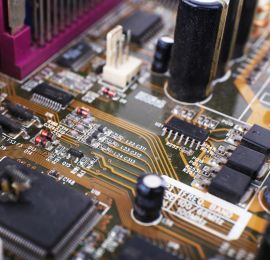electroniccomponentssurplus@gmail.com
Free shipping on all orders over £300
Electronic Verification
Electronic component verification is an essential part of the design and manufacturing process for electronic devices. Without proper verification, there is a risk of faulty or damaged components being used, leading to malfunctioning or even dangerous products. In this guide, we'll explore the basics of electronic component verification and provide some tips to help you ensure your components are up to standard.
What is Electronic Component Verification?
Electronic component verification is the process of testing and verifying the quality and performance of electronic components before they are used in a device or product. This process is crucial to ensure that the components are functioning correctly and that they meet the required standards and specifications.
There are various methods of electronic component verification, including visual inspection, functional testing, electrical testing, and environmental testing. Each of these methods is designed to detect specific types of defects or issues, and they are used in combination to provide a comprehensive assessment of the components.
Visual Inspection
Visual inspection is the first step in the electronic component verification process. This involves inspecting the components for any physical defects, such as cracks, corrosion, or other damage. Visual inspection is a simple and quick process that can be done using a magnifying glass or microscope.
Functional Testing
Functional testing is the next step in the verification process. This involves testing the component's function or performance using a specific set of criteria. For example, a resistor may be tested for its resistance value or a capacitor for its capacitance value. Functional testing is usually performed using specialized equipment or software, and it can help identify any performance issues with the component.
Electrical Testing
Electrical testing is another critical aspect of electronic component verification. This involves testing the component's electrical characteristics, such as voltage, current, and frequency. Electrical testing is usually performed using a multimeter or oscilloscope, and it can help identify any electrical defects or issues.
Environmental Testing
Environmental testing is the final step in the electronic component verification process. This involves testing the components in various environmental conditions, such as temperature, humidity, and vibration. Environmental testing can help identify any issues with the component's durability or reliability under different conditions.
Tips for Electronic Component Verification
-
Use high-quality components: Using high-quality components is essential to ensure that your products are reliable and safe. Choose reputable suppliers and verify that the components meet the required standards and specifications.
-
Establish a verification process: Establishing a clear and consistent verification process is critical to ensure that all components are tested and verified to the same standard. This process should include visual inspection, functional testing, electrical testing, and environmental testing.
-
Use specialized equipment: Using specialized equipment or software can help simplify the verification process and ensure accurate results. Investing in high-quality testing equipment can help save time and reduce the risk of errors or inaccuracies.
-
Document your results: Documenting your verification results is essential to ensure that all components are tracked and accounted for. This documentation should include the component's part number, batch number, date of verification, and verification results.
Conclusion
Electronic component verification is a crucial part of the design and manufacturing process for electronic devices. By following the tips outlined in this guide, you can ensure that your components are up to standard and that your products are safe and reliable. Remember to use high-quality components from Electronic Components Surplus, use specialized equipment, and document your results. With these steps in place, you can be confident that your electronic devices will perform as expected and meet the necessary standards and specifications.
- Choosing a selection results in a full page refresh.


